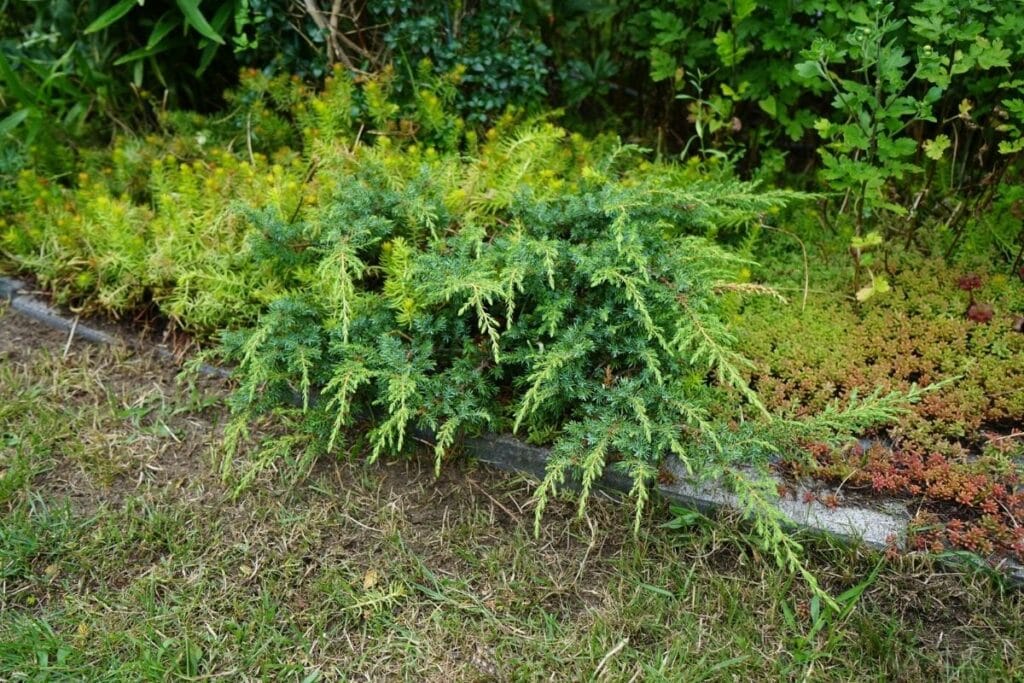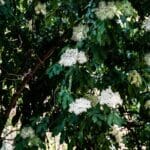Junipers are extremely versatile and hardy evergreens that have a huge range of uses in the landscape. These plants have great texture and provide interest in all seasons of the year. In this article, we’ll be taking a look at how to grow and care for your own juniper plant.
What Is A Juniper Plant?
Junipers are evergreen coniferous plants of the Cupressaceae (cypress) family. The exact number varies according to who you ask, but there are at least 50 different Juniper species.
As is typical of conifers, these are evergreen plants that have small scale or needle-like leaves. Junipers come in a variety of shapes and sizes, from groundcover-like plants of less than a foot (0.3m) in height to tall column-shaped trees of over 130 feet (40m).
These plants have a very wide distribution and are found practically throughout the northern hemisphere. Just one species is known to occur below the equator in Africa. They can be very long-lived plants with some specimens considered to be well over 2000 years old!
Interestingly, the juvenile leaf shape often differs pretty dramatically from mature plants. The leaf color varies tremendously as well, especially with the range of horticultural forms available. These plants come in various shades, including blue-green, golden, lime, and grey-green foliage.
Juniper Berries
Conifers do not flower or produce true fruits, but instead, grow cones and berry-like structures known as galbuli. The galbulus of juniper plants varies in size and color but usually measures 0.1-1 inch (2.5-25mm) across. These structures contain 1-3 seeds and usually mature in 1 or 2 years. Junipers are either monoecious or dioecious, depending on the species.
Ornamental Juniper Species
The most popular juniper shrubs for gardeners and horticulturalists are the Chinese Juniper (J. chinensis) and the Common Juniper (J. communis). Some other popular Juniperis species include:
- Juniperus bermudiana
- J. coxii
- J. grandis
- J. conferta
- J. horizontalis
- J. procumbens
- J. sabina
- J. scopulorum
- J. squamata
- J. virginiana
How To Grow A Juniper Bush
Juniper plants can be grown from seed, but this is a very slow method that requires much patience. You may need a plant of both sexes to produce fertile seeds in cones that take well over a year to mature. Thereafter, seeds can take as long as 5 years to germinate and then another year before they can be potted.
Cuttings are a faster method of propagation, but they are also slow to take root. Success relies on taking young cuttings that have green bases, and they can be taken in the late summer to late winter.
A popular juniper propagation technique, particularly amongst bonsai enthusiasts, is the process of air layering. This technique involves removing a ring of bark on a suitable branch and packing a substrate such as moss around the cut. This area is wrapped in plastic, and if successful, roots will develop at the site, and the newly rooted branch can be removed and replanted.
Soil type is not particularly important and these plants can be grown in clay to sandy soils with varying pH. What is very important is that the soils do not remain saturated, because these plants will not tolerate wet feet.
In fact, junipers are generally very drought-tolerant plants that actually prefer fairly dry soil. For this reason, allowing the soil to dry out between watering tends to produce good results. Mature plants usually will not need supplementary watering, but newly planted specimens should be watered until established.
Cold hardiness does vary with species, but there are juniper shrub selections available from zones 3 and up. Position these plants in full sun if possible, although a little shade is usually acceptable too.
Care and Maintenance
Junipers are very tough and hardy, but slow-growing plants. They are generally very neat plants that don’t need much pruning. Be careful to avoid cutting back to old wood when pruning because these plants will usually refuse to resprout.
The fact that these plants do not do well when pruned hard naturally makes choosing a form with a suitable size and shape very important. To neaten them up, simply trim the shoot tips. Staying on top of removing dead growth and foliage within the plants and on the ground below them will assist in keeping good airflow and a drier environment which these plants benefit from.
Unfortunately, juniper bushes can be affected by a few different fungal diseases. These include various Gymnosporangium rust types, Cercospora, Kabatina, and Phomopsis infections. Fungicide applications can be used to control these diseases. Reported pest infections include bagworms, spruce spider mites, and juniper scale.
Uses
Horticultural Uses
Junipers are very popular landscaping plants with a great variety of uses, just as you would expect from such a diverse group of plants. They can be tightly trimmed, making them a fine choice for formal hedges and topiary work. There are some effective evergreen groundcover forms that are perfect for stabilizing slopes.
Junipers are also very popular for bonsai. You can also check our guides on juniper bonsai care and Shimpaku juniper bonsai to learn more.
One important consideration for the use of juniper bush in the landscape is the tendency for young growth to be rather spikey, so bear this in mind when choosing your planting site.
Human Uses
One of the most well-known uses for the juniper plant is in the production of gin, an alcoholic spirit. The unripe berries of J. communis are most popular for this, although some other species are occasionally used. The berries of certain species also have food or spice uses. Not all juniper berries (cones) are edible though and some are very unpalatable or even toxic.
Juniper plants have been used for medicinal purposes for millennia. Uses of J. communis include the treatment of gastrointestinal and auto-immune disease, as well as in anti-arthritis and anti-diabetes treatments.
Wildlife Uses
Birds feed on juniper berries and distribute the seeds. Deer resistance does vary depending on the juniper species and cultivar. Many forms are rarely damaged by deer but some may be severely affected.
FAQs
Conclusion
Admittedly, junipers aren’t the most dazzling or exciting plants. They do provide all-year interest in a fairly low-maintenance package and have a huge range of climate tolerances, making them a wonderful addition to just about any landscape. Have fun picking out a selection, and growing this plant on your property!For more bushes to grow, check our bushes and shrubs list.
*image by cristaldream/depositphotos







